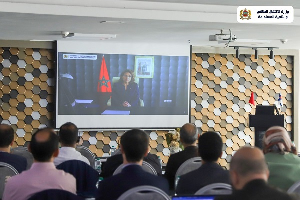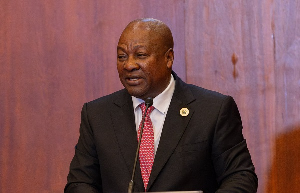Behind the necessary ramp-up of renewable energies, the challenge of integrating them into the power grid occupied centre stage at the North & West Africa Energy Transition Forum.
According to Wärtsilä Energy, a leading power plant manufacturer, and energy systems integrator in Africa, there are multiple constraints to be taken into account to increase the share of renewables while guaranteeing more reliable power production.
To solve this complex equation, the issues of making the energy system more flexible, anticipating technological developments, and financing must be addressed effectively. These were the key issues discussed at the 2024 North and West Africa Energy Transition Forum in Rabat, which brought together the major public and private players in the energy sector in the region.
A headache for grid operators
"The region's power grids are under great stress, with permanent constraints leading to chronic instability," explained Marc Thiriet, Africa Energy Business Director at Wärtsilä Energy. "At the same time, they need to be developed at a rapid pace to cope with the expected increase in electricity demand, which is increasingly coming from renewable energy sources. Grids, which already have to adapt to highly fluctuating demand downstream, will also have to manage an increased volume of intermittent solar and wind power generation upstream, which will make grid management work much more complex ".
This is why more flexible electricity generation must be added. This flexibility comes primarily from so-called "balancing" technologies, i.e. battery storage on the one hand, and flexible engine power plants on the other. Unlike storage, balancing engine technology is relatively unknown to the general public, yet these power plants have already been deployed for many years in almost all African countries (e.g. Tan-Tan, a 116MW engine power plant in Morocco).
This technology is in great demand because of its many advantages, particularly in terms of operating efficiency, which makes it well-suited to the unique conditions in Africa, such as heat, humidity, and unstable fuel supply. In particular, balancing engine power plants can ramp up and download very quickly to meet the multiple daily fluctuations in electricity demand and renewable generation. This is a major advantage in facilitating the integration of large-scale renewable energies into the grid.
The key role of sustainable fuels in the energy transition
According to Marc Thiriet, "Today's energy choices commit us for decades to come. This is why electrification strategies must be considered over the very long term on the basis of in-depth analyses, which must also fully integrate the major technological evolutions that are emerging, such as the emergence of sustainable fuels ".
Indeed, while balancing power plants equipped with "Dual-Fuel" engines long could switch from one fuel to another (natural gas, oil or biomethane) without even having to be shut down, it is the current emergence of new sustainable fuels, hydrogen in the first instance, that will enable us to take the ultimate step towards decarbonizing power grids.
"Flexible power plants will need to be able to use all available sustainable fuels, with hydrogen being the most likely solution in the long term. Biofuels such as biomethane already exist locally and are ready to be used for controllable power generation," explained Martial Claudepierre, Senior Expert in Sustainable Fuels at Wärtsilä Energy." One of the objectives will be, in the event of excess renewable electricity production, to use it to produce green hydrogen, which will then be stored and used to produce green electricity when renewable energies are intermittent, or electricity prices are high.
Currently, Wärtsilä’s balancing engines can run on a fuel blend containing up to 25% hydrogen. It is expected that within a few years, multi-fuel engines will be able to run exclusively on all sustainable fuels, such as ammonia or methanol, enabling a transition to 100% renewable energy with zero carbon impact and at a competitive cost.
Because of their flexibility and fuel versatility, engine power plants are an excellent foundation on which to build a renewable future. " Wärtsilä's goal by 2030 is to provide a complete portfolio of power plants that will be ready for full operation on carbon-free fuels," announced Kenneth Engblom, Vice President of Wärtsilä Energy for Africa & Europe.
Business News of Tuesday, 23 April 2024
Source: Wärtsilä Energy
We need to solve the complex equation of energy transition and grid reliability - Wärtsilä
Entertainment












